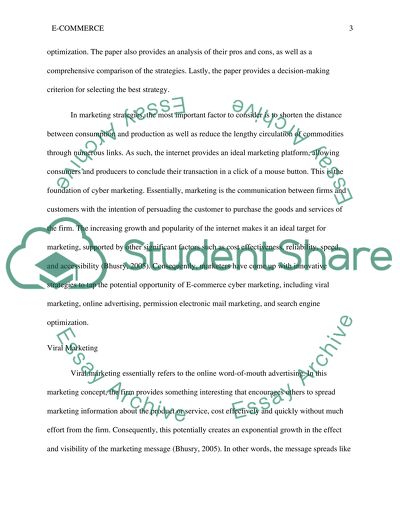Cite this document
(“E-Commerce Cyber Marketing Strategies Essay Example | Topics and Well Written Essays - 2750 words”, n.d.)
Retrieved from https://studentshare.org/e-commerce/1444841-describe-and-discuss-the
Retrieved from https://studentshare.org/e-commerce/1444841-describe-and-discuss-the
(E-Commerce Cyber Marketing Strategies Essay Example | Topics and Well Written Essays - 2750 Words)
https://studentshare.org/e-commerce/1444841-describe-and-discuss-the.
https://studentshare.org/e-commerce/1444841-describe-and-discuss-the.
“E-Commerce Cyber Marketing Strategies Essay Example | Topics and Well Written Essays - 2750 Words”, n.d. https://studentshare.org/e-commerce/1444841-describe-and-discuss-the.


